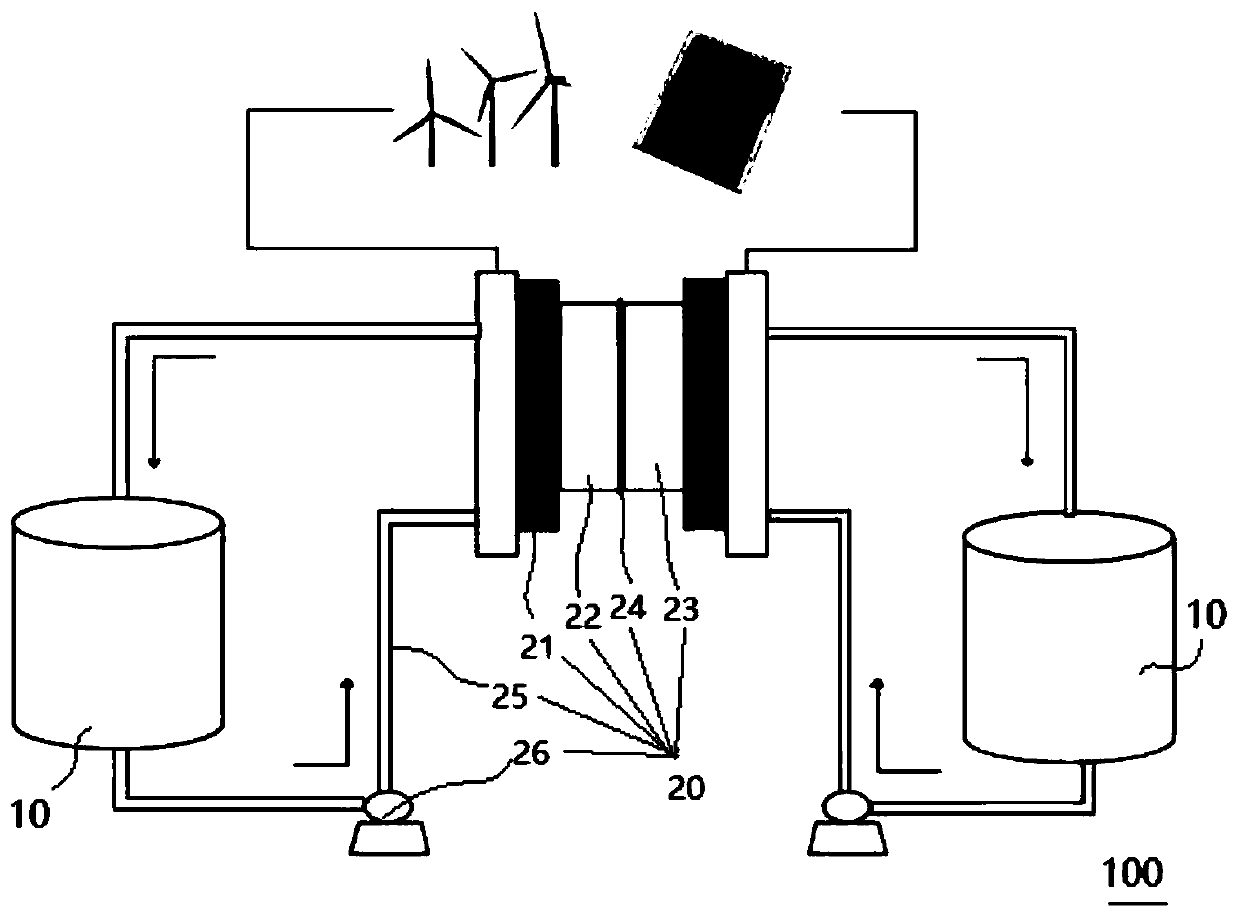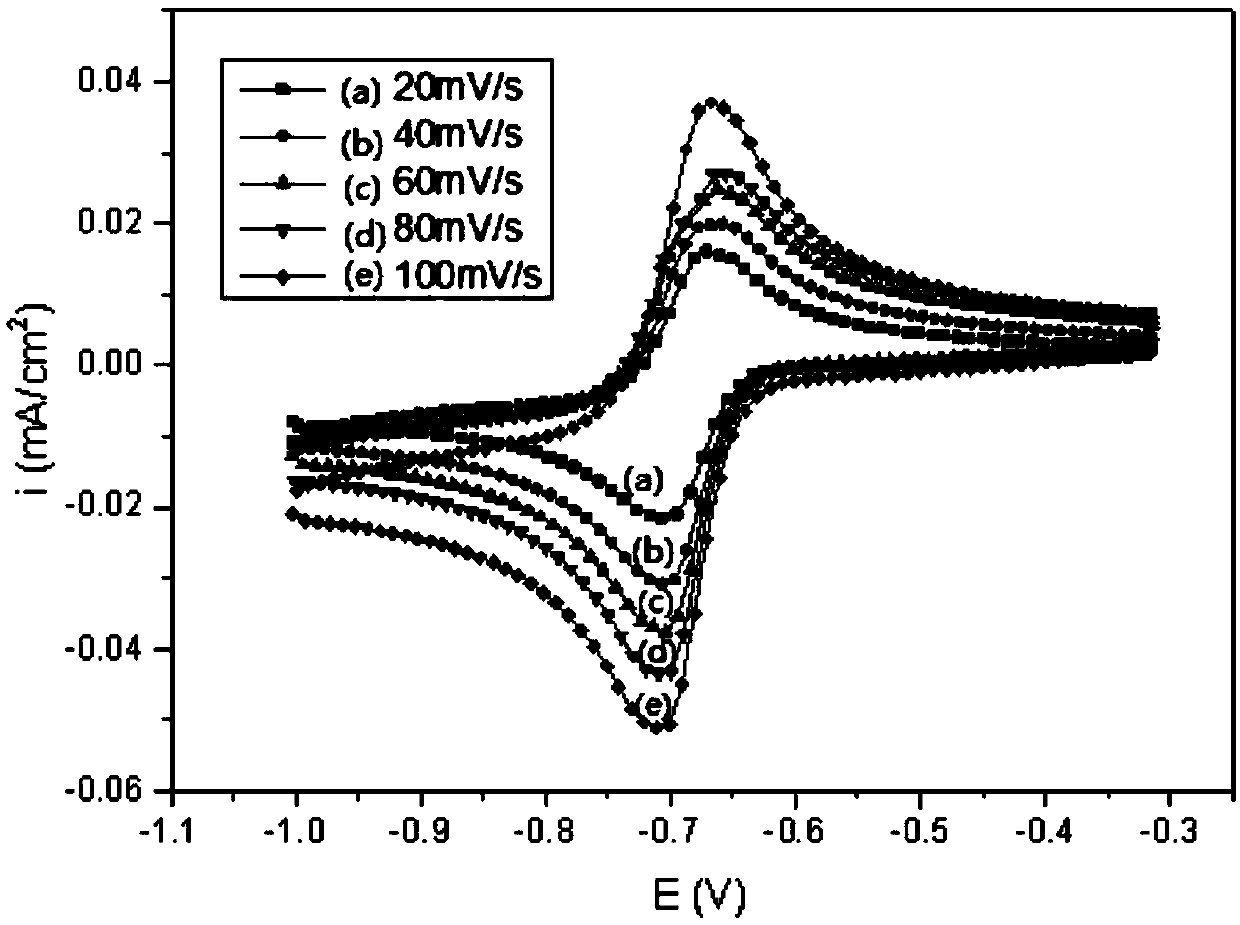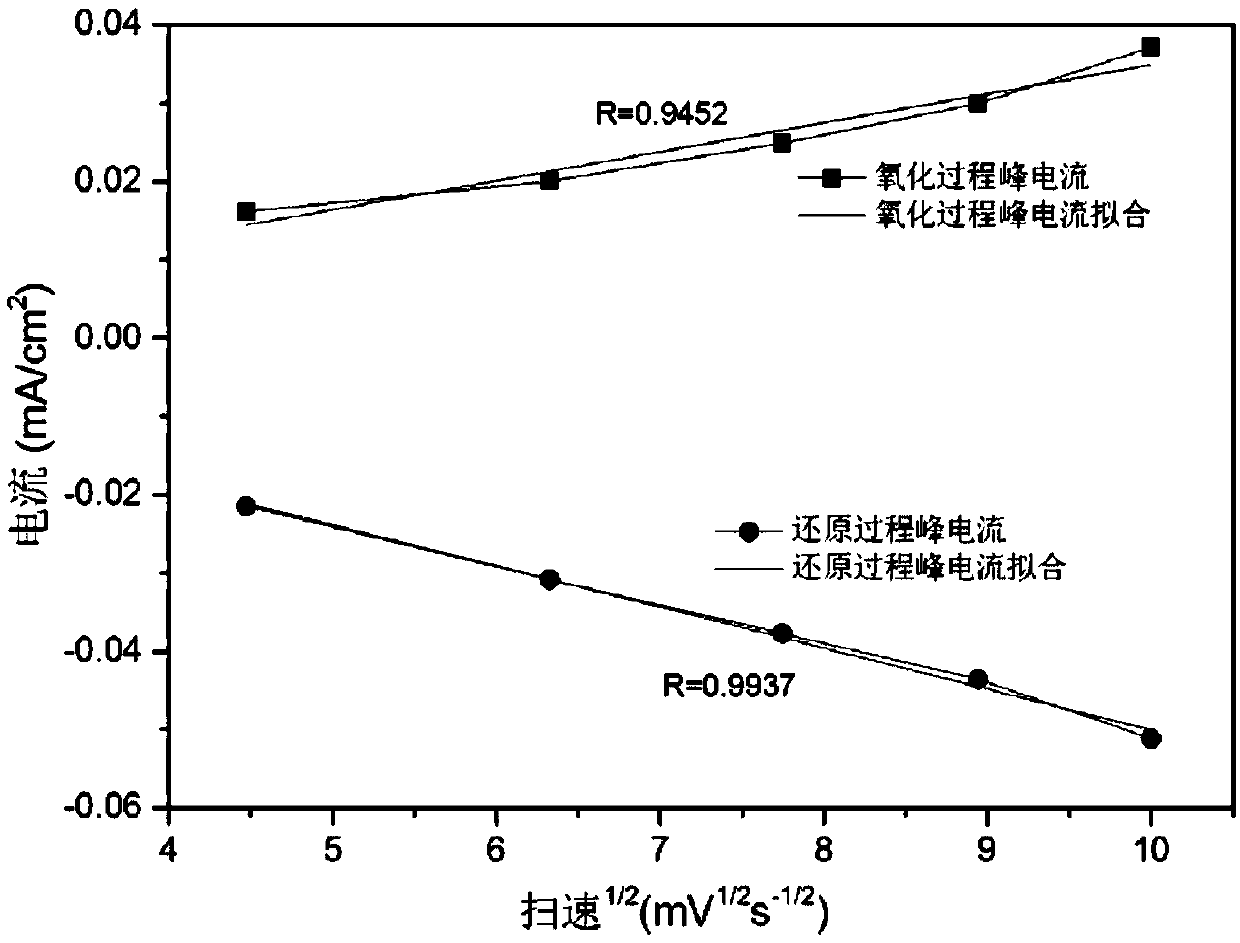Organic liquid flow battery system for aqueous system based on salt cavern
A liquid flow battery and system technology, applied in the direction of fuel cells, aqueous electrolytes, fuel cell additives, etc., can solve problems such as hidden dangers, low Coulombic efficiency, and limited solubility of active materials, and achieve stable charge and discharge performance, high safety performance, The effect of high solubility
- Summary
- Abstract
- Description
- Claims
- Application Information
AI Technical Summary
Problems solved by technology
Method used
Image
Examples
Embodiment 1
[0072] The negative electrode active material in the negative electrode electrolyte solution 23 is 0.05mol L -1 1,4-dihydroxyanthraquinone, the positive electrode active material in the positive electrode electrolyte solution 22 is 0.05mol L -1 4-OH-TEMPO, the supporting electrolyte in the positive electrolyte 22 and the negative electrolyte 23 are both 2.5mol L -1 Table 1 shows the coulombic efficiency, voltage efficiency and energy efficiency of the single cell of the salt cavern-based aqueous organic flow battery system (Ⅰ) assembled in the sodium chloride solution, and using NaOH to adjust the pH of the solution to 14.0.
Embodiment 2
[0074] The negative electrode active material in the negative electrode electrolyte solution 23 is 0.05mol L -1 1,4-dihydroxyanthraquinone, the positive electrode active material in the positive electrode electrolyte solution 22 is 0.05mol L -1 4-OH-TEMPO, the supporting electrolyte in the positive electrolyte 22 and the negative electrolyte 23 are both 2.5mol L -1 Table 1 shows the coulombic efficiency, voltage efficiency, and energy efficiency of the single cell of the salt cavern-based aqueous organic flow battery system (II) assembled using KOH to adjust the pH of the solution to 14.0.
Embodiment 3
[0076] The negative electrode active material in the negative electrode electrolyte solution 23 is 0.1mol L -1 1,4-dihydroxyanthraquinone, the positive electrode active material in the positive electrode electrolyte solution 22 is 0.1mol L -1 4-OH-TEMPO, the supporting electrolyte in the positive electrolyte 22 and the negative electrolyte 23 are both 2.5mol L -1 Sodium sulfate solution, using NaOH to adjust the pH of the solution to 14.0, the coulombic efficiency, voltage efficiency and energy efficiency of the single cell of the salt cave-based aqueous organic flow battery system (Ⅲ) assembled are shown in Table 1.
PUM
| Property | Measurement | Unit |
|---|---|---|
| pore size | aaaaa | aaaaa |
| pore size | aaaaa | aaaaa |
| thickness | aaaaa | aaaaa |
Abstract
Description
Claims
Application Information
 Login to View More
Login to View More - R&D
- Intellectual Property
- Life Sciences
- Materials
- Tech Scout
- Unparalleled Data Quality
- Higher Quality Content
- 60% Fewer Hallucinations
Browse by: Latest US Patents, China's latest patents, Technical Efficacy Thesaurus, Application Domain, Technology Topic, Popular Technical Reports.
© 2025 PatSnap. All rights reserved.Legal|Privacy policy|Modern Slavery Act Transparency Statement|Sitemap|About US| Contact US: help@patsnap.com



